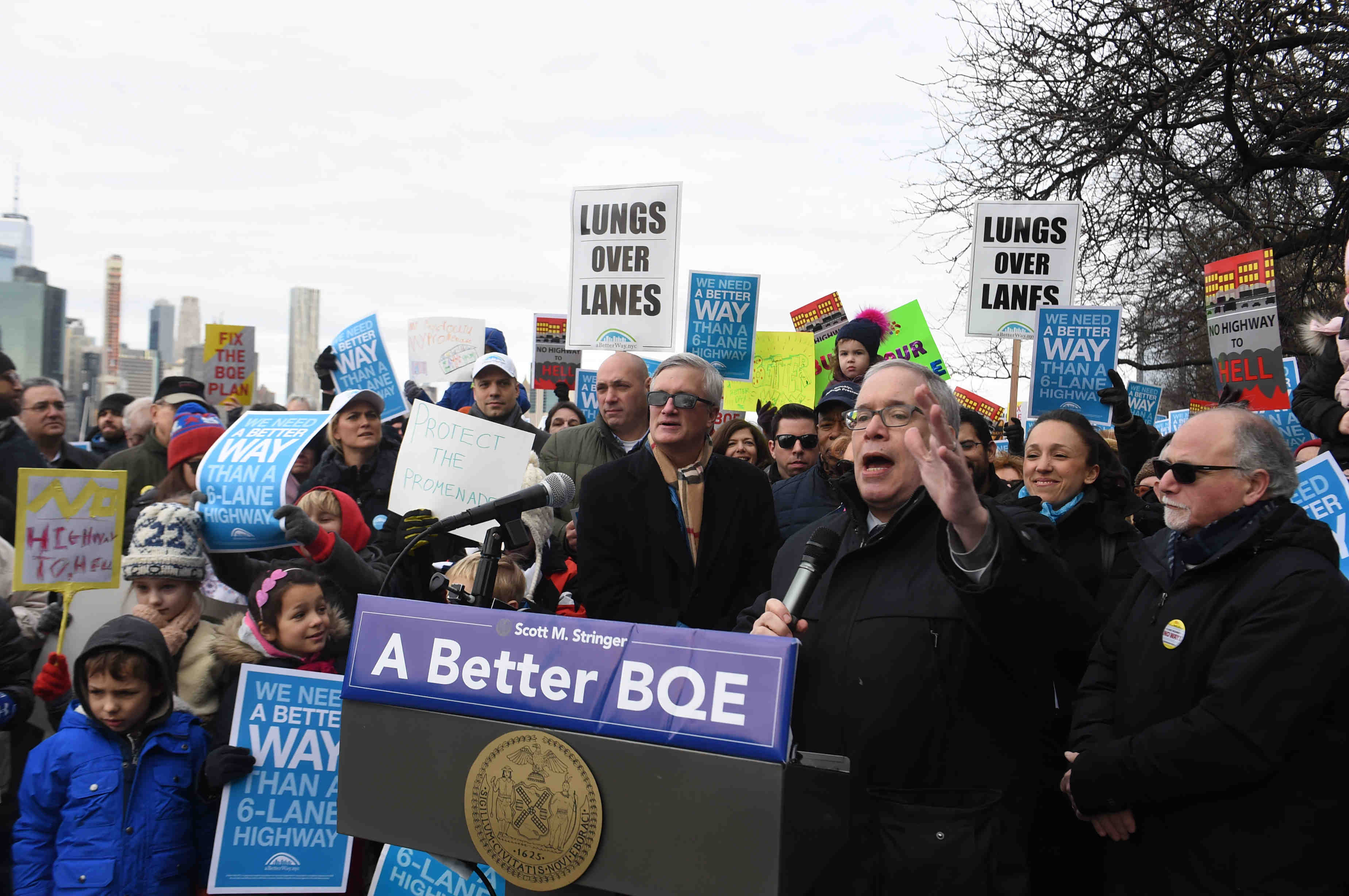Brooklyn Heights Promenade rally draws hundreds to protest BQE rehab plan
Crowd reactions fueled by discomfort from weather and conciliatory remarks

A vocal crowd of several hundred people braved sub-freezing weather on Saturday to demonstrate their opposition to a six-lane “highway in the sky” that would destroy the landmark Brooklyn Heights Promenade.
Residents ranging in age from 9 to 90, and representing Brooklyn Heights, Cobble Hill and surrounding neighborhoods, carried placards, and crowded around a podium of elected officials.
Leaders from A Better Way NYC — a grassroots, non-profit organization focused on the environmental, economic and community impact of repairing the Brooklyn-Queens Expressway — joined Peter Bray, executive director of the Brooklyn Heights Association; City Comptroller Scott Stringer and an array of elected officials as they called on Mayor Bill de Blasio and Department of Transportation Commissioner Polly Trottenberg for transparency and community engagement around the proposed Brooklyn-Queens Expressway rehabilitation.

Brooklyn Boro
View MoreNew York City’s most populous borough, Brooklyn, is home to nearly 2.6 million residents. If Brooklyn were an independent city it would be the fourth largest city in the United States. While Brooklyn has become the epitome of ‘cool and hip’ in recent years, for those that were born here, raised families here and improved communities over the years, Brooklyn has never been ‘uncool’.